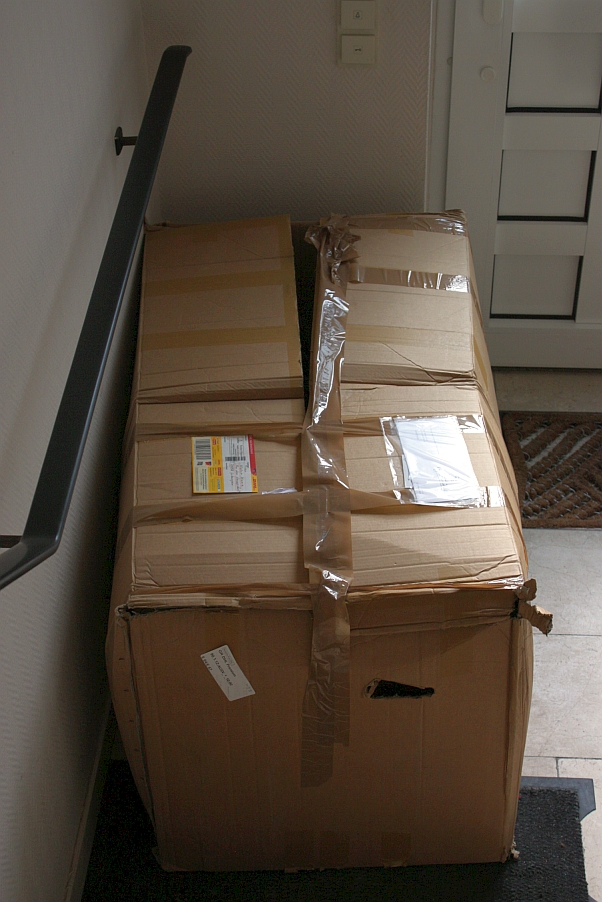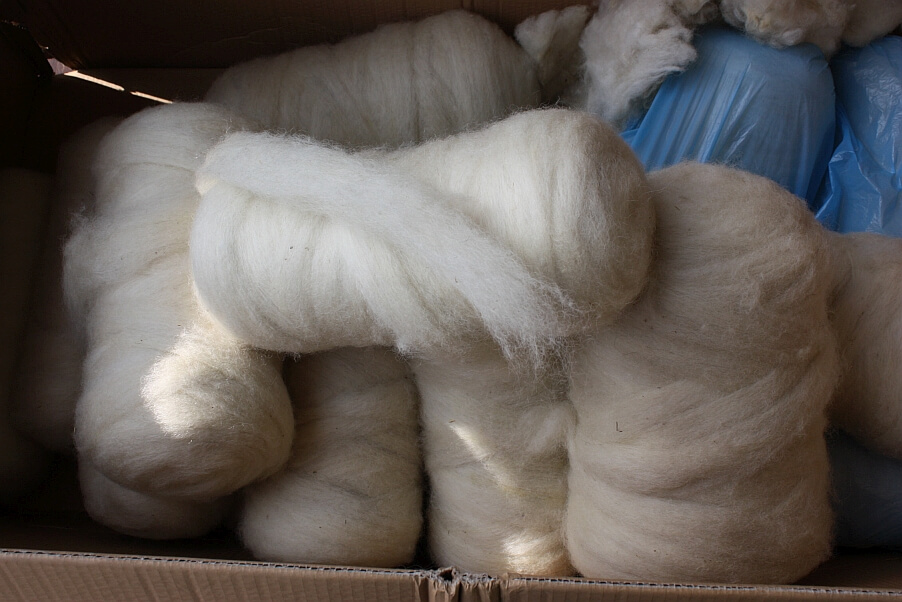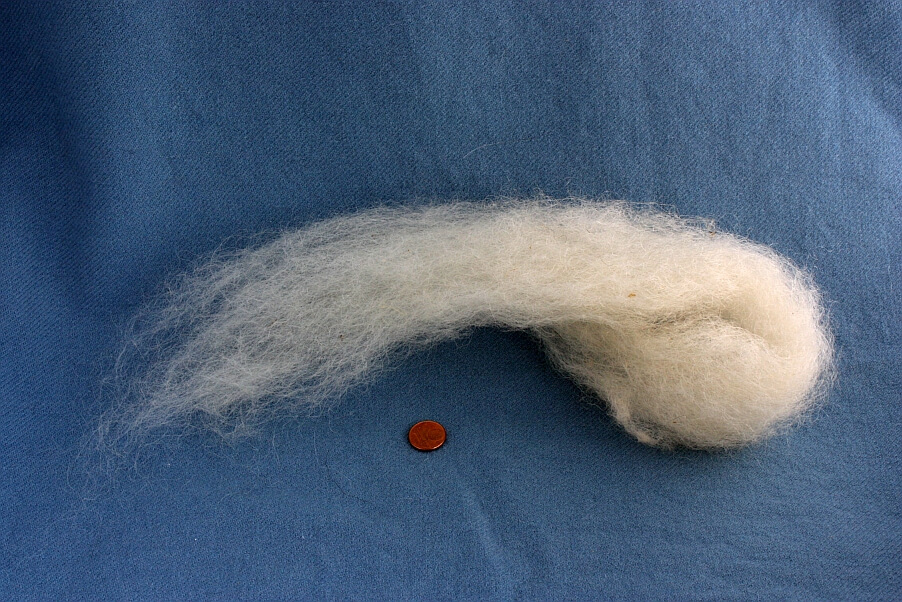"What whorl weight should I choose?" is one of the questions I get very frequently - and as with so many questions, there is no single clear answer.
In my experience, whorl weight and spindle weight are a very personal thing. I've made good experiences with whorl weights of about 25-35 g for beginning spinners, and that is also what I pack into my starter kits. There are, however, always a few people who feel better spinning with a lighter or a heavier whorl.
According to my experience over the years, and also to the results of the Spinning Experiment back in 2009, the only thing that the weight of the whorl will definitely mean for spinning is what I call a "running quality control". If your spindle weighs 40 g, you can be sure that the thread will, at any point, be able to sustain a 40 g load or tension (provided you spin suspended). For somebody who spins for a weaver, as most spinners, historically, will have done, this is a crucial thing. If the thread breaks while spinning, it's not something you rejoice over, but it's also no big deal. You pick up the spindle, fluff up the end of your thread, re-connect it to the fibre supply, and on you go. A thread breaking on the loom is an entirely different story and much less fun, plus much more work to fix, so the last thing a weaver wants are unreliable, breakage-prone threads. Hence a running quality control would be a very good thing. That does not mean a yarn spun on a lighter spindle may not be able to hold the required weight, but you don't have this running quality control built into the process.
The rest of the spindle weight is, within a rather large range, doing nothing to influence spinning in regard to thread thickness. This mostly happens in the head of the spinners, who have, in many cases, heard "light spindles for thin thread" so often it becomes a self-fulfilling prophecy. A lot of beginning spinners are also afraid the spindle will drop if the thread is thin. My advice is that you should pick a spindle weight (and a whorl shape) for something that feels good to you and that twirls nicely in your fingers. Here, biomechanics come into play. If the spindle is too heavy, or too light, it will not be as easy to flick into a quick rotation as one that is in your personal good weight range. It's a little like throwing a ball - if you want to hurl it a long distance, and the ball is very light, it will be awkward and hard to throw. If the ball is too heavy, it's also hard to throw for a long way; but inbetween, there is a range of weights that you will be able to throw far (and not hurting your shoulder in the process).
Personally, I tend to use heavy spindles, even for the relatively thin threads that I usually spin. As my spindle stick fills with yarn, there comes a point when I feel the spindle doesn't turn as nicely as at the beginning, and at this point I will exchange the whorl for a lighter, smaller one. For me, that results in maximum efficiency when spinning (and also in maximum pleasure).
So depending on what kind of yarn people want to spin, their biomechanics, what they are used to, their spinning style, preferred fibres and probably some other squishy factors, there is no firm rule or guideline to tell which spindle weight and whorl shape they will find best. The good thing about medieval spindles, though: You can stick on about anything that has a hole in it. So if you are unsure, get a spindle stick and try out random stuff as whorls - wooden toy wheels, glass beads large or small, stone beads, stone donuts, clay whorls, clay beads, things in different densities and shapes. Stick on a small apple if you feel like it. Or a potato (not for historically correct medieval spinning, though!). Then once you have an idea of what works for you, you can get exactly the whorl you want.
Or whorls. Spindle sticks and their knobbly companions, after all, are herd animals...
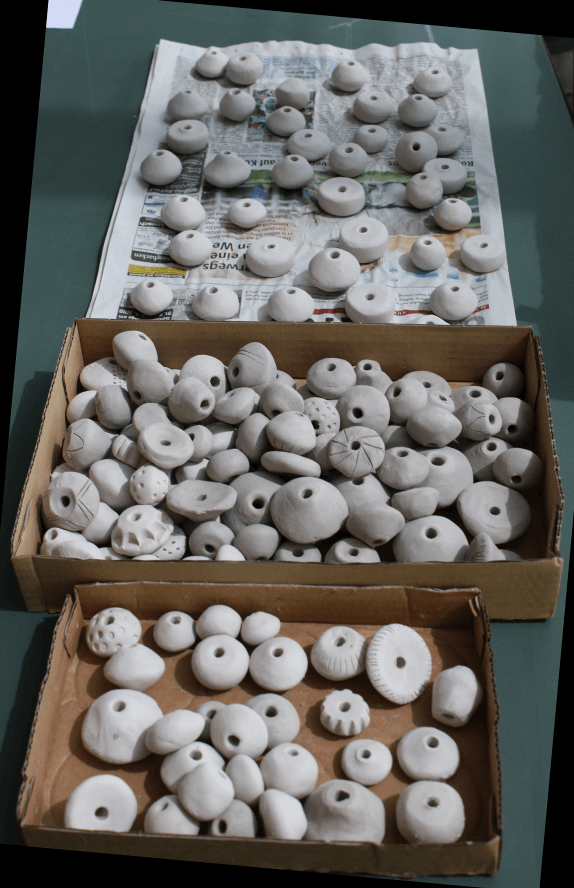




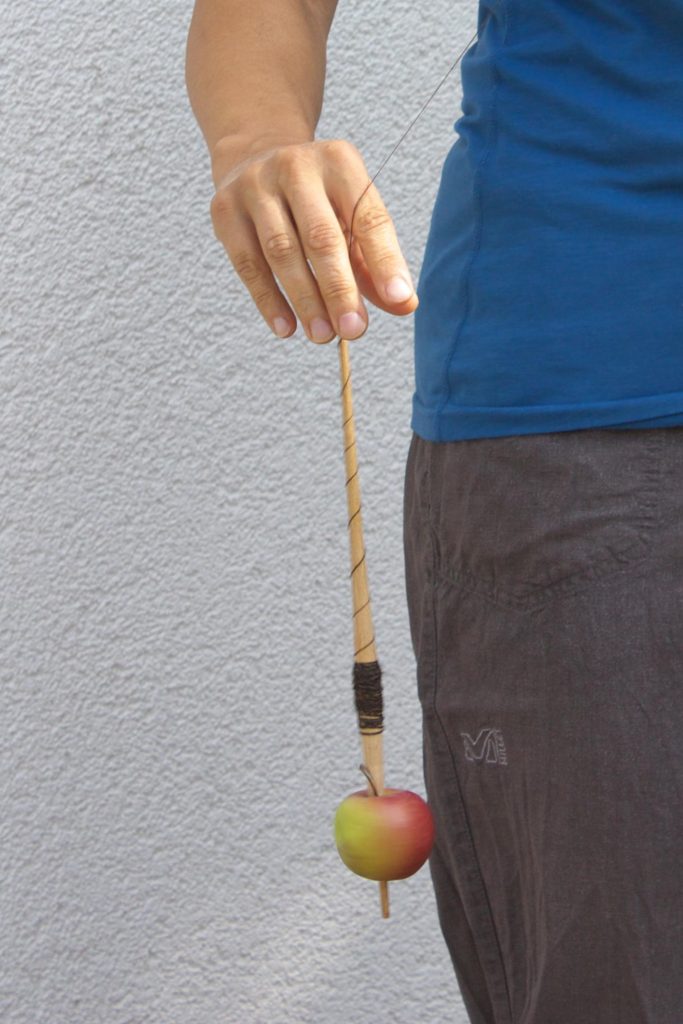
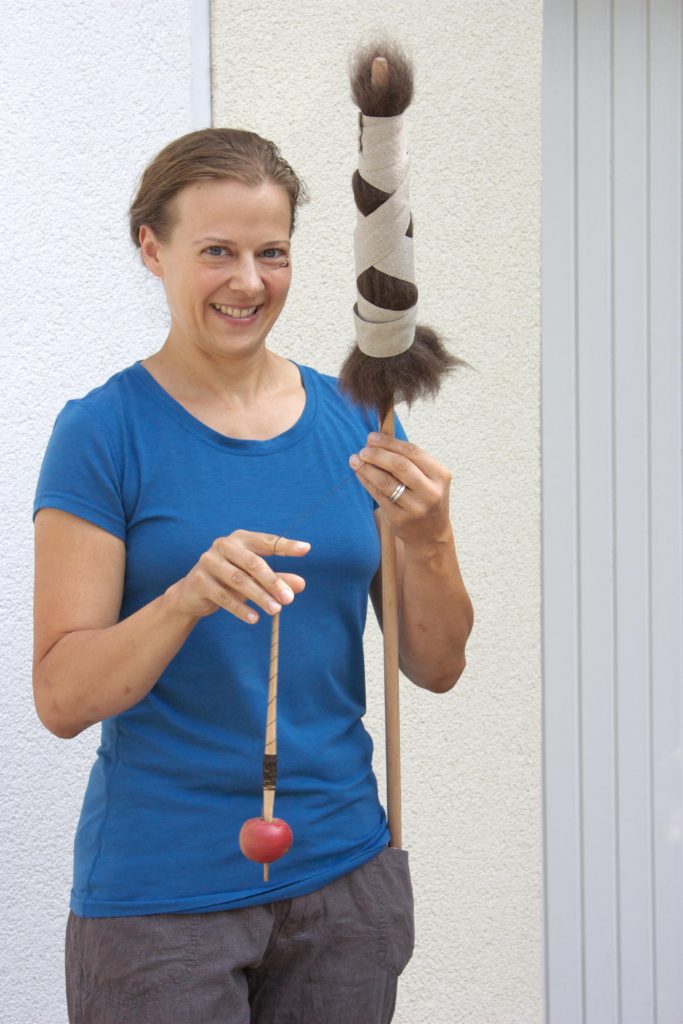
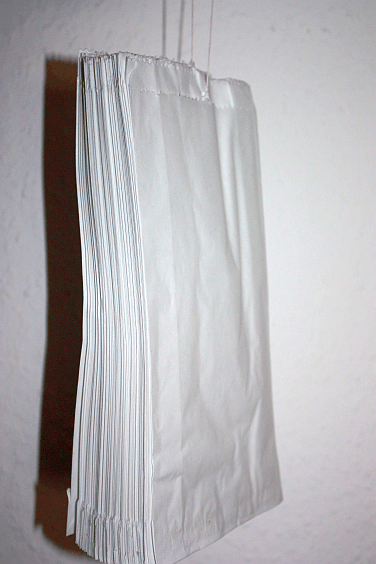
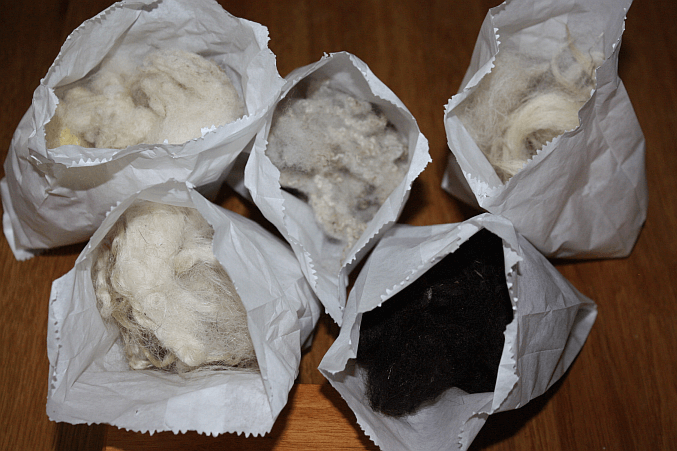
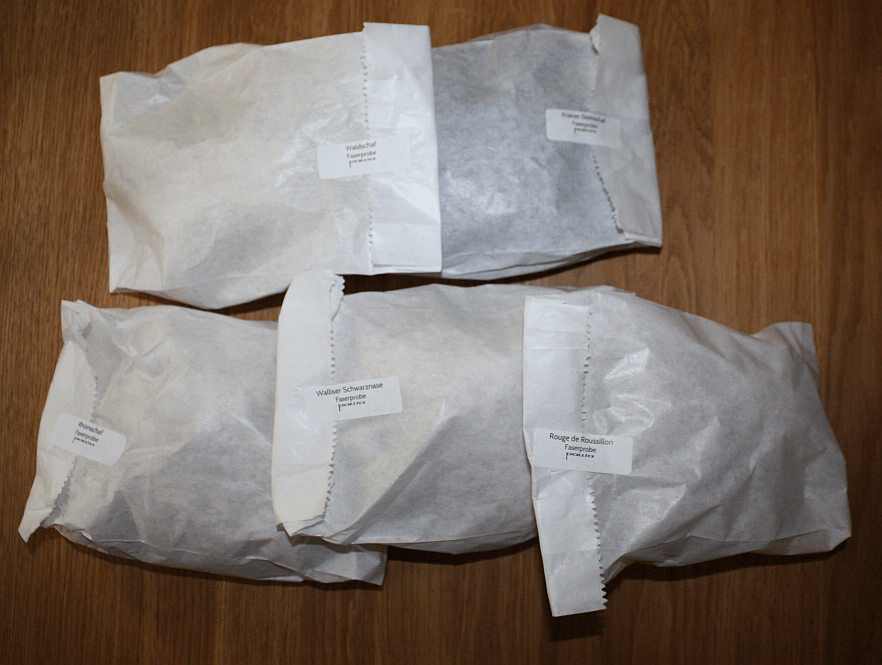
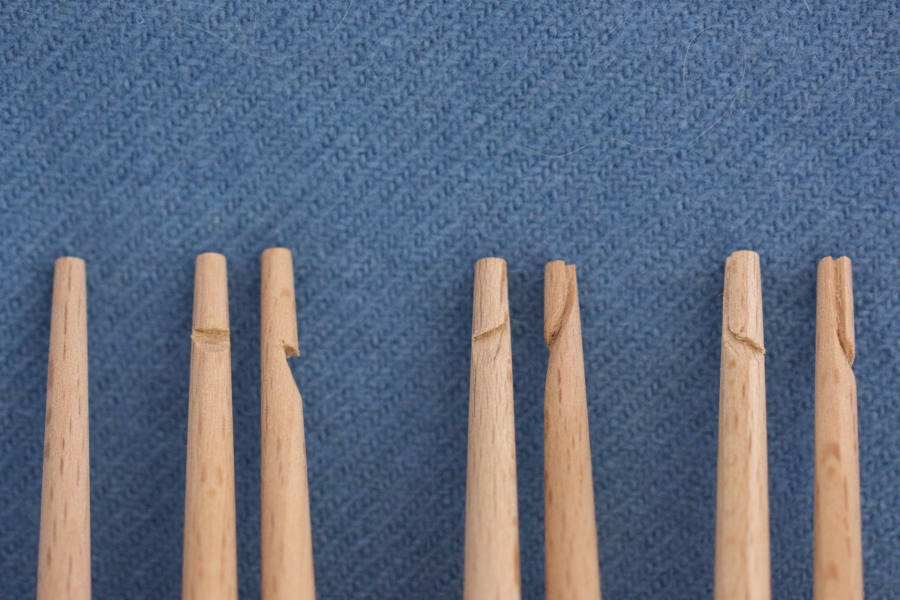 Notches! From left to right: plain un-notched tip, horizontal notch, diagonal notch for z-spun yarn, diagonal notch for s-spun yarn.
Notches! From left to right: plain un-notched tip, horizontal notch, diagonal notch for z-spun yarn, diagonal notch for s-spun yarn.